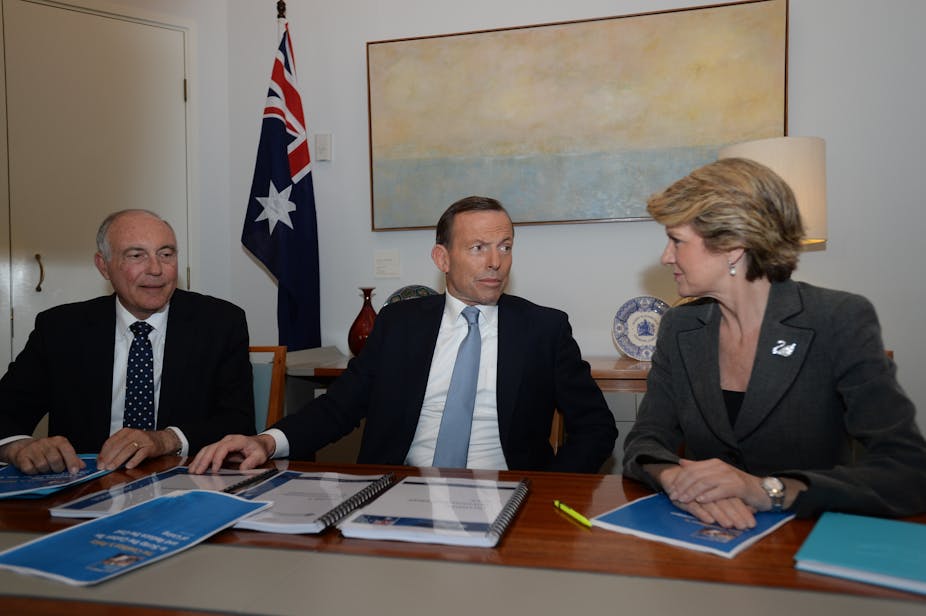As the higher education sector begins to look to life under the 44th parliament, it might pause to consider the words of prime minister-elect Tony Abbott upon claiming victory last Saturday night:
“The time for campaigning has passed, the time for governing has arrived.”
With the burden of office comes a sense of pragmatism. People behave differently once off the campaign trail – not immediately, but usually over the long term.
The incoming education minister, presumably Christopher Pyne with the possible support of Brett Mason in the higher education and research portfolio, will come to one immediate conclusion. On balance, they have inherited a portfolio in good health.
Under the previous Coalition government support for research and development in Australia as a proportion of GDP grew from around 1.5% in 2002 to almost 2.0% in 2007. Continued support under Labor saw that proportion move upwards over 2.2% edging closer to the OECD average which is around 2.3%.
For Australian research, the decade since 2002 has been kind with progressive increases in funding for people and projects, infrastructure and equipment. This has propelled 19 Australian universities into the Academic Ranking of World Universities top 500 and five into the top 100. This was helped by the additional funds created by expanding student places, which in turn led to a greater capacity to undertake more research.
For this they should thank their predecessors as far back as Coalition education ministers David Kemp and Brendan Nelson who gave us the Backing Australia’s Ability and Backing Australia’s Future innovation plans, former Liberal higher education minister Julie Bishop who brought us the Higher Education Endowment Fund, former Labor prime minister Julia Gillard for the uncapping of student places and the former Labor higher education minister Kim Carr for his commitment to senior, mid and early career fellowships plus Higher Degree Research scholarships.
The prime minister-elect also deserves an honourable mention here for his commitment as health minister to doubling the National Health and Medical Research Council budget.
No government would want to undo these accomplishments, especially when their own Coalition predecessors, including the incoming prime minster and foreign minister, were largely responsible.
But there will be cuts and there will be some redirection of funding. Those engaged in medical research and big science will be feeling more comfortable than colleagues in the humanities, arts and social sciences who might be entering a difficult period.
They will most certainly need to sharpen up their arguments about the impact of their research and to lobby for the creation of a Chief Social Scientist position like never before.
It is doubtful that the Coalition will reverse Labor’s efficiency dividends – cuts to universities that were to fund the former government’s school funding reforms. Although the new government will still need to pass legislation to implement them.
The Coalition’s Real Solutions for All Australians paper commits to the continuation of current funding levels as well as support for long-term infrastructure funding. Of course, the Coalition has committed to cutting red tape, regulation and reporting in the sector – as did Labor in 2007.
The Coalition has committed to developing Northern Australia as an “education hub” and the promotion of the region as a study destination for international students. But there remains a question mark over whether students will want to study there.
The foreign minister’s creation of a “New Colombo Plan” is also commendable. The new policy, based on the post-war higher education initiative which supported Asia’s elite to study in Australia, would see more Australian undergraduates study in Asia. But we have a task at hand to convince our students to consider this option with the same enthusiasm they have for Europe and North America.
Medical research and training will be well cared for with additional places for interns, practice incentive payments and allied health scholarships. A Murray-Darling medical school will be placed onto the agenda by the Nationals, while support for research into areas such as tropical health, diabetes and dementia have already featured.
The Coalition has also left itself with ample policy wiggle room in some key areas. Throughout the campaign they have remained silent on their precise approach to the uncapping or recapping of student places or the reintroduction of full-fee places.
The commitment for a review and restructure of research funding leaves much up in the air. Likewise we have no detail on Coalition plans on research impact – that is, assessing research based on its impact on industry or the community. The future of recent exercises in the area of assessing research quality, including an impact component of the Excellence in Research for Australia program or revival of the Research Quality Framework, remains uncertain.
Just prior to the election, Abbott expressed some intriguing views about higher education in The Conversation, stating:
Obviously the higher education sector is a contributor to GDP, and it is important for our economy, but in the end universities are there to pursue learning, they’re there to be the guardians of truth, they’re there to push the boundaries of knowledge.
This strong commitment to the value of education in its own right will undoubtedly prompt robust Cabinet discussions.
What lies in store for the sector varies by discipline and in the eyes of the beholder. It is improbable that any cuts will be as severe as Howard’s 1996 cuts. As higher education expert Andrew Norton has already suggested, cuts will most likely be driven by a need to correct budget deficits than to serve party interests.

